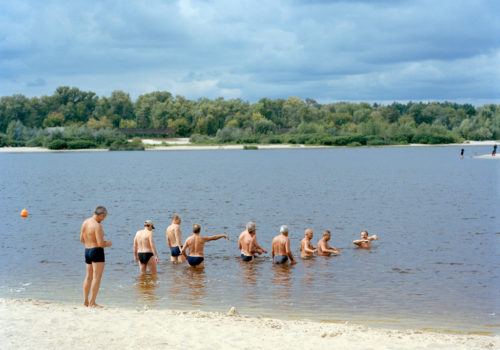Hidropark sits right in the middle of Kiev on two islands in the river. It was created during the Soviet era as an entertainment complex, offering water sports and recreational activities for locals. Today, most of it is still a public space for leisure and enjoyment.
Thousands of Ukrainians visit every summer to appreciate the park’s relaxing environment and to use its recreational facilities, which have emerged over the years. There is a huge open air gym made from car parts and scrap metal by volunteers. There are bars, restaurants, a fun fair, and beaches mainly frequented by the working class from the suburbs and from villages around the capital. Many facilities are reminiscent of bygone days and some people believe Hidropark to be a high crime area that one should avoid visiting after dark. However, there are also new places popping up, like privatized beaches and beach clubs for the more affluent. Over the years many different plans have been proposed to change the infrastructure of the park in order to push tourism and economic development forward. One idea is to construct an analogue of Disneyland in Hidropark.
I stumbled upon Hidropark a few years ago when I visited Kiev. After my first visit I ended up returning to the islands for the following three summers. I was as much drawn to the slightly anarchistic landscape of the park, which speaks at once about its past, present and future, as I was drawn to the people and activities – the evening dances, the table tennis where elders meet and socialize, the beach life, the gym where people of all classes and ages train.
In my project I picture Hidropark’s landscape and visitors before a substantial regeneration of the park becomes reality. I capture summertime on these islands in the middle of Ukraine’s capital, Kiev; summertime which ultimately talks as much about the place as it captures a slice of Ukrainian culture amidst political struggle and economic insecurity.
















